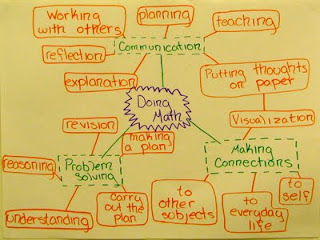Natasha Lewis Harrington is a doctoral psychology student who writes about my favorite game (Magic: the Gathering) in her spare time. Sometimes she crosses the stream to great effect. Like this week, when she wrote about why this game is so good at encouraging creativity among players. It's applying the work of (let me copy and paste here) Mihaly Csikzentmihalyi (specifically Creativity: Flow and the Psychology of Discovery and Invention [Google book preview]) to the question of how can we learn to engage more. I think it's well readable by non-Magic players, so please do peruse.
Here's the quick take:
(The little bit of art is from Flickr, Paolo Colacino who does what he calls generative art. Quite neat.)
Csikzentmihalyi has a TED talk about leaving boredom:
Why is this gripping me so? Because of the divide between math as taught and math as it could be.
Math, as it is often taught, violates all three of these principles. (1) We tell you the problems to do, (3) we insist on solo mastery and uniformity of method.
Wait, that's only two.
I'm wondering if I have, in my need to change (1) and (3), more than occasionally neglected (2). Is that the procedural knowledge which I de-emphasize? I usually do that in an attempt to get the pendulum swinging in the other direction, but in doing so am I denying needed support?
 Maybe not. Maybe Learning the System in mathematics is not the procedural stuff. Maybe it's the processes, hidden behind the procedural emphasis. (The processes now appearing with their new band, the Standards for Mathematical Practice.)
Maybe not. Maybe Learning the System in mathematics is not the procedural stuff. Maybe it's the processes, hidden behind the procedural emphasis. (The processes now appearing with their new band, the Standards for Mathematical Practice.)Of course, there's hope. Teachers like Fawn Nguyen, Michael Pershan and Andrew Stadel are knocking this engagement issue out of the park on all three principles.
But, as Dave Coffey has cautioned, and convinced me, we need to teach our students to take control of their own engagement. So when they leave Jim Pai's classroom, they can be engaged the next year, too.
That's empowerment, and that's what I want for my students.











